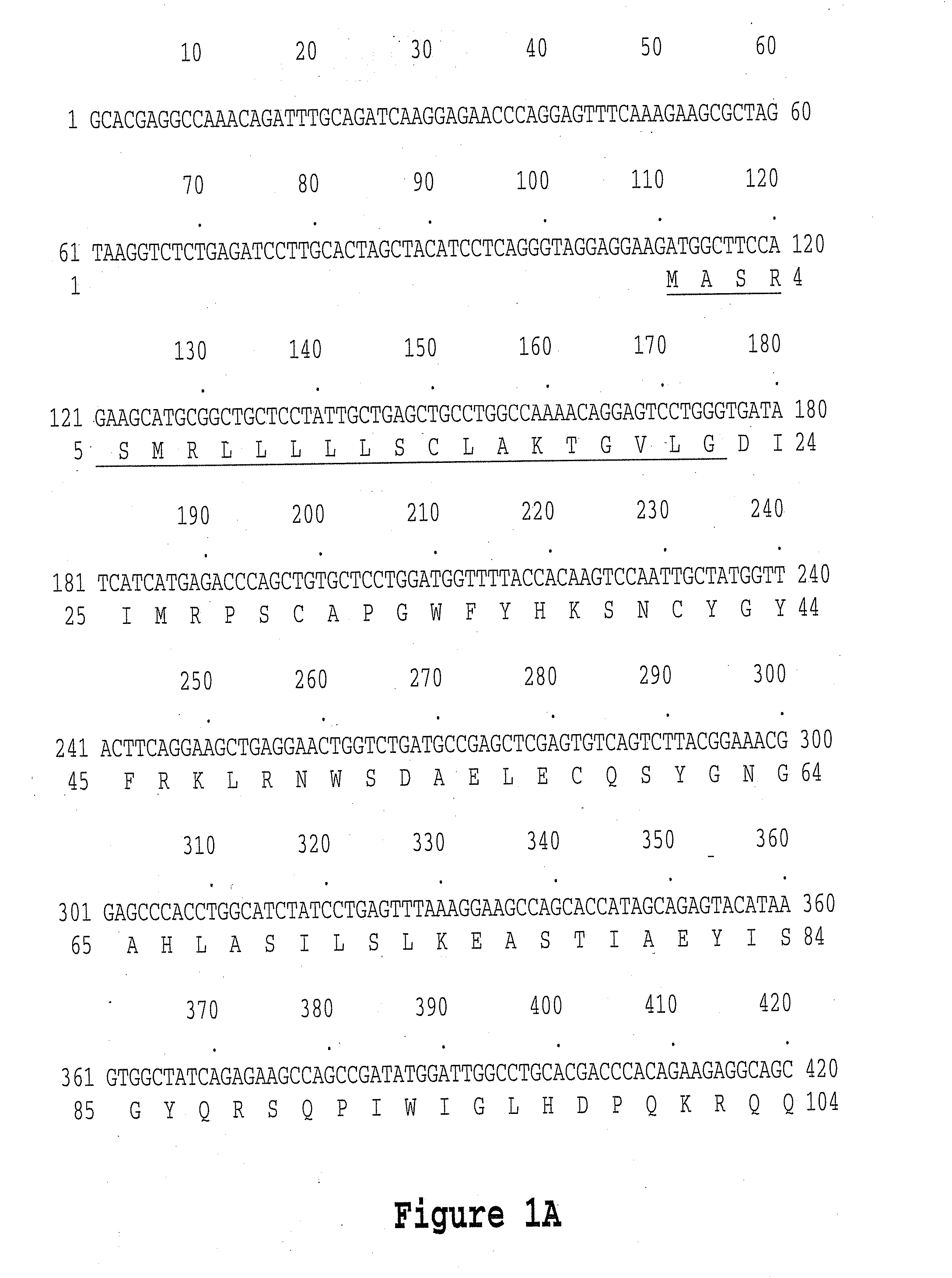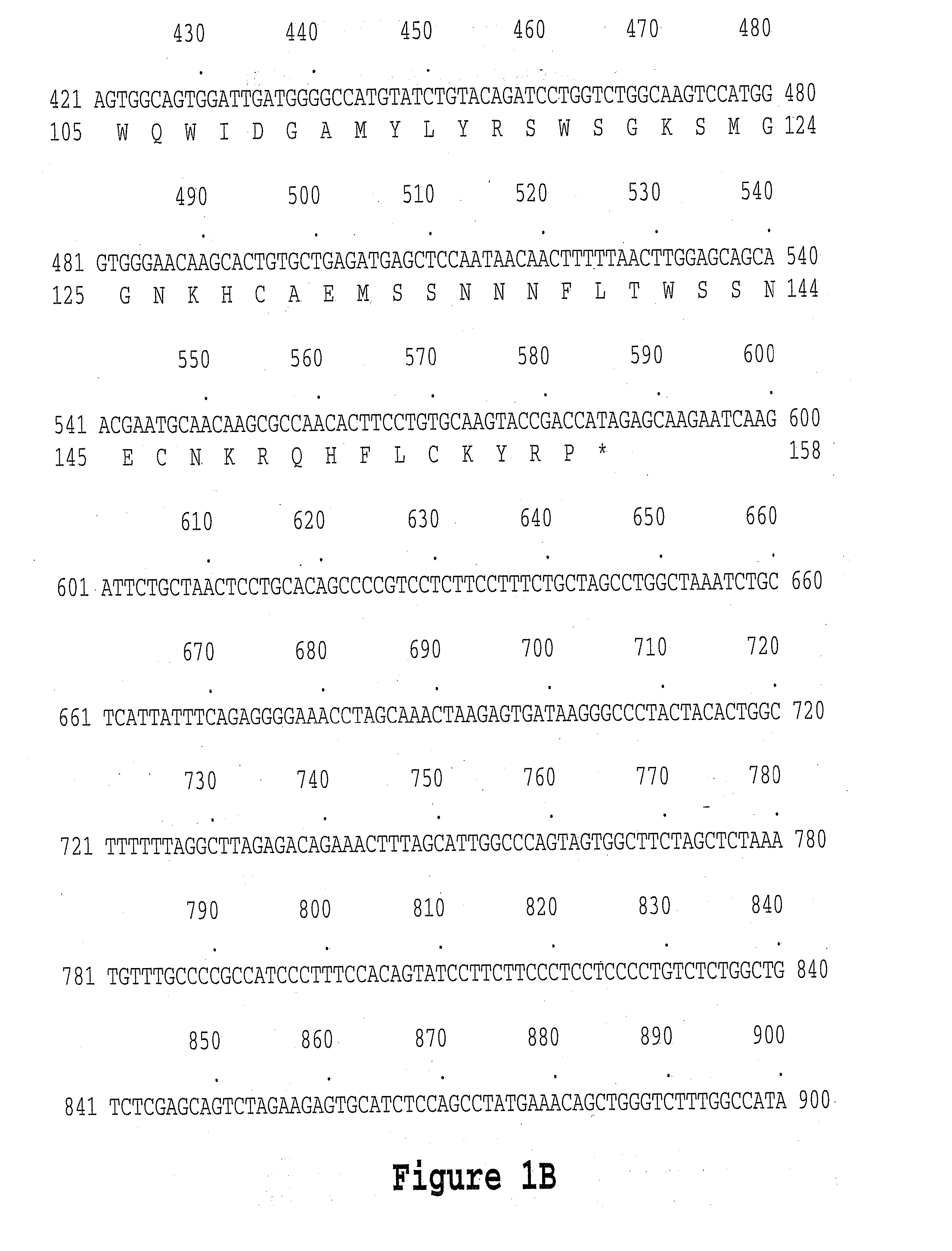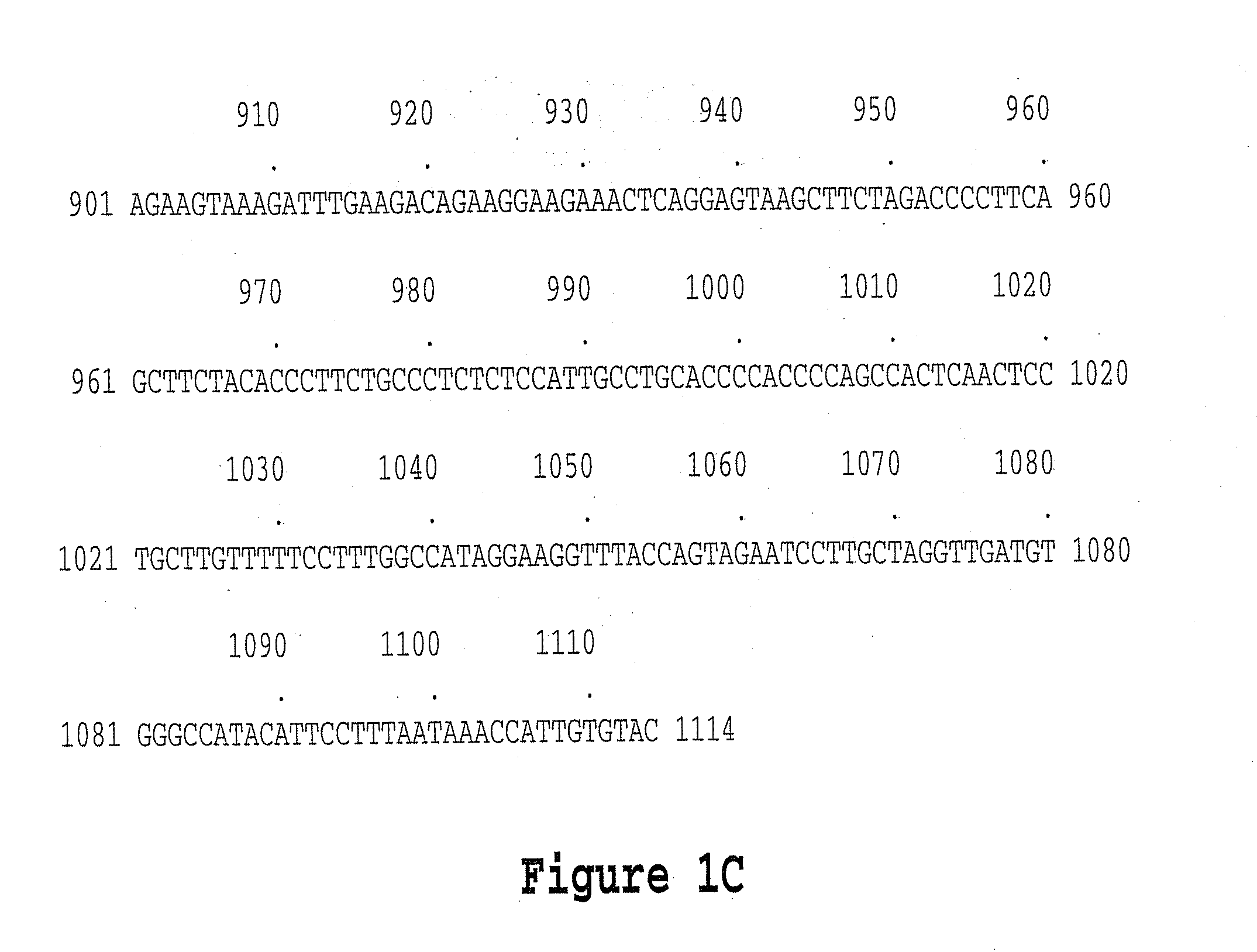Colon Specific Gene and Protein and Cancer
- Summary
- Abstract
- Description
- Claims
- Application Information
AI Technical Summary
Benefits of technology
Problems solved by technology
Method used
Image
Examples
example 1
Determination of Transcription of the Colon Specific Gene
[0531] To assess the presence or absence of active transcription of a Colon Specific Gene RNA, approximately 6 ml of venous blood is obtained with a standard venipuncture technique using heparinized tubes. Whole blood is mixed with an equal volume of phosphate buffered saline, which is then layered over 8 ml of Ficoll (Pharmacia, Uppsala, Sweden) in a 15-ml polystyrene tube. The gradient is centrifuged at 1800×g for 20 min at 5° C. The lymphocyte and granulocyte layer (approximately 5 ml) is carefully aspirated and rediluted up to 50 ml with phosphate-buffered saline in a 50-ml tube, which is centrifuged again at 1800×g for 20 min. at 5° C. The supernatant is discarded and the pellet containing nucleated cells is used for RNA extraction using the RNazole B method as described by the manufacturer (Tel-Test Inc., Friendswood, Tex.).
[0532] To determine the quantity of mRNA from the gene of interest, a probe is designed with an...
example 2
Bacterial Expression and Purification of the Colon Specific Gene protein and Use For Preparing a Monoclonal Antibody
[0535] The DNA sequence encoding a polypeptide of the present invention, ATCC™ #97129, is initially amplified using PCR oligonucleotide primers corresponding to the 5′ sequences of the processed protein (minus the signal peptide sequence) and the vector sequences 3′ to the gene. Additional nucleotides corresponding to the DNA sequence are added to the 5′ and 3′ sequences respectively. The 5′ oligonucleotide primer GCAGGATCCTGGCTTCCAGAAGCATG (BAMHI) (SEQ ID NO:3) may contain, for example, a restriction enzyme site followed by nucleotides of coding sequence starting from the presumed terminal amino acid of the processed protein. The 3′ sequence TACGGGTACCTTGCTCTATGGTCGGTAC (ASP718) (SEQ. ID NO:4) may, for example, contain complementary sequences to a restriction enzyme site and also be followed by nucleotides of the nucleic acid sequence encoding the protein of interes...
example 3
Expression via Gene Therapy
[0537] Fibroblasts are obtained from a subject by skin biopsy. The resulting tissue is placed in tissue-culture medium and separated into small pieces. Small chunks of the tissue are placed on a wet surface of a tissue culture flask, approximately ten pieces are placed in each flask. The flask is turned upside down, closed tight and left at room temperature over night. After 24 hours at room temperature, the flask is inverted and the chunks of tissue remain fixed to the bottom of the flask and fresh media (e.g., Ham's F12 media, with 10% FBS, penicillin and streptomycin, is added. This is then incubated at 37° C. for approximately one week. At this time, fresh media is added and subsequently changed every several days. After an additional two weeks in culture, a monolayer of fibroblasts emerge. The monolayer is trypsinized and scaled into larger flasks.
[0538] pMV-7 (Kirschmeier, P. T. et al, DNA, 7:219-25 (1988) flanked by the long terminal repeats of t...
PUM
| Property | Measurement | Unit |
|---|---|---|
| Gene expression profile | aaaaa | aaaaa |
Abstract
Description
Claims
Application Information
 Login to View More
Login to View More - R&D
- Intellectual Property
- Life Sciences
- Materials
- Tech Scout
- Unparalleled Data Quality
- Higher Quality Content
- 60% Fewer Hallucinations
Browse by: Latest US Patents, China's latest patents, Technical Efficacy Thesaurus, Application Domain, Technology Topic, Popular Technical Reports.
© 2025 PatSnap. All rights reserved.Legal|Privacy policy|Modern Slavery Act Transparency Statement|Sitemap|About US| Contact US: help@patsnap.com



